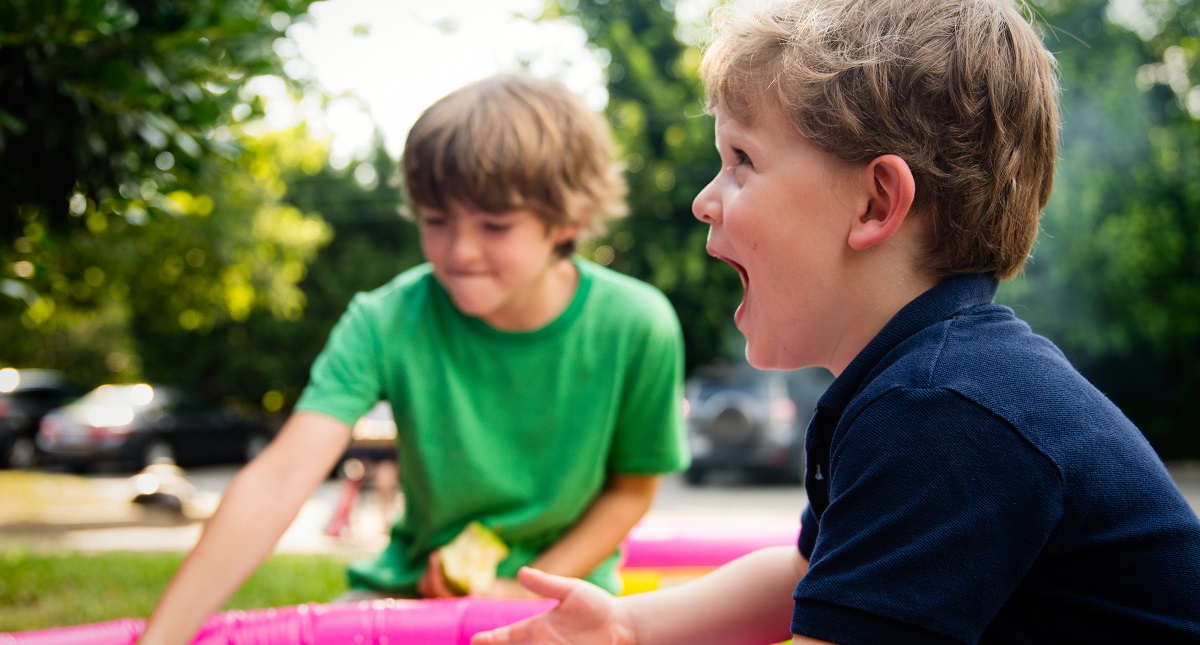Contact Us
As parents of young children, we are always seeking the most effective ways to interact with them, either through a bonding experience or with a new activity that might keep them happy and entertained. But as we try to select those activities, we also hope that they have an enriching and educational impact in their long-term development. As a mother to a 3-year-old boy who is extremely picky with his activity selection, I can’t help my own frustration when I’m unable to entertain him for long. Through the vast choices presented to us in books, magazines, websites and other media, we can’t help but wonder what the best options for our kids might be when it comes to choosing materials that will provide that positive stimuli for their young minds. Frankly, it’s easy to be overwhelmed by the amounts of parent-targeted materials, but don’t let that deter you from using simple parenting tactics that will help facilitate a cognitive development approach for your child.
Perhaps at times we are overthinking the choices before us and forget about the basics. When I say the basics, I’m referring to the techniques and materials early educators have been using for years that can still be utilized as the foundations for promoting children’s thinking and problem-solving skills at home. My mother, an early educator and teacher, taught me these techniques that I’m now able to apply with my son. Even when it seems like he doesn’t want to engage me, I keep trying through the virtue of parent patience. To do this, we must step back and think about simple ways to engage children through our approaches without overwhelming their stimuli or losing their focus. Aside from providing age-appropriate materials, we can provide balance through activities that encourage curiosity, exploration and discovery. Regardless of the type of activity, encourage something that involves developmentally appropriate, hands-on experiences.
For the infant and toddler age group, you can choose simple activities that require moving, hiding and changing objects, or activities that encourage active play and exploration in general. As for preschool-aged children, you can introduce them to materials that are focused toward specific subjects, such as math, science, technology and social studies. For example, you can provide “real” science items when doing an activity with them like worms, leaves, rocks, magnifying glasses, etc.
Materials to inspect and manipulate are excellent ideas for all young children, as well as puzzles, books, manipulatives, outdoor water/sand play and blocks in a variety of shapes and textures that are developmentally appropriate. Keep in mind that the materials and equipment you use might need to be modified to each individual child’s needs in the way it’s presented for the activity. In my experience while working with children, some kids prefer that you show them first and then allow them to play by themselves.
During an activity with your children, it’s important to listen to what they have to say and encourage them to think/talk about what they see, hear, smell, taste and touch. Encourage their curiosity by helping them notice the “cause and effect” of certain actions and get them to share their feedback with you on what they are experiencing and observing. With my son, I create variations of activities, for instance, we may stack blocks the regular way, but then I may stack them at the edge of a surface to show they are more likely to fall in that position, or place them on a slanted surface, to show that they can slide if placed on there; you get the idea.
There are ways we can promote our children’s thinking and problem solving through our daily interactions with them, not just through educational activities, but also during routine tasks such as mealtimes, washing hands and going outside, which are times you can always encourage thinking and feedback from them about their individual experiences. Ask simple questions, “Can you show me how you brush your teeth? How do we wash our hands?”
Taking a mental note when your children take interest in certain activities at an early age can certainly help in selecting materials and equipment that also target those areas of interest, which can provide an even more enjoyable bonding experience for you and them. For us parents, it’s crucial to be able to build on the knowledge that children acquire, and we can do that through making connections with them. For instance, for problem-solving, link learned concepts to previous experiences, and also support children’s repetition of the familiar through talks and popular activities they may enjoy. The process of impacting your children’s development through interactions can seem like a great responsibility, but through simple activities we can make sure that we’re doing our part in trying to stimulate their cognitive abilities in a positive manner.
Claudina Hannon, M.A, is currently the Staff Writer/Editor at the Council for Professional Recognition. She is also a linguist and writer whose experience includes bilingual early childhood education, language acquisition and TESOL.
